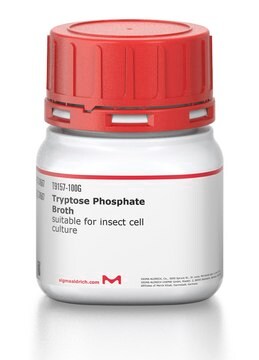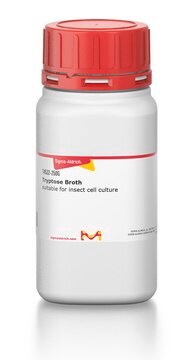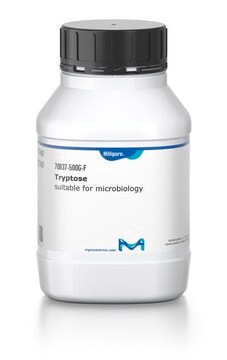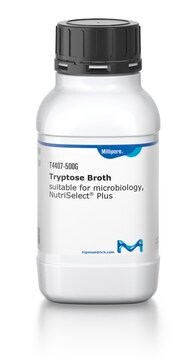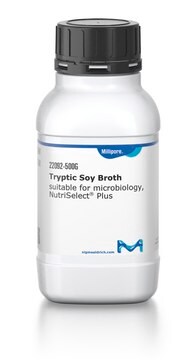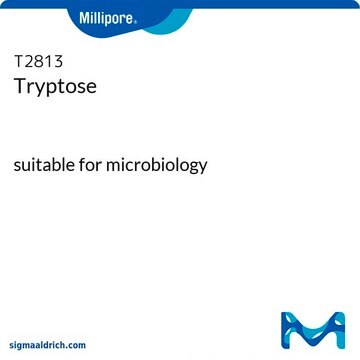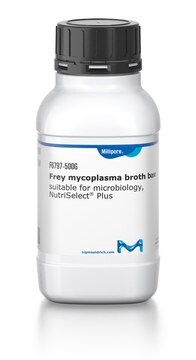T8782
Tryptose Phosphate Broth
buffered powder, Microbiologically tested.
Synonim(y):
Tryptose Broth
About This Item
Polecane produkty
Postać
buffered powder
jakość
Microbiologically tested.
Opis ogólny
Zastosowanie
- of Leibovitz L-15 medium for the culture of BME26 tick embryo cell line
- of M199 medium for the preparation of chick embryo fibroblasts (CEFs)
- of Glasgow′s minimum essential medium (GMEM) for culturing baby hamster kidney (BHK-21) before transfection
Działania biochem./fizjol.
Komponenty
najczęściej kupowane z tym produktem
Kod klasy składowania
11 - Combustible Solids
Klasa zagrożenia wodnego (WGK)
WGK 1
Temperatura zapłonu (°F)
Not applicable
Temperatura zapłonu (°C)
Not applicable
Środki ochrony indywidualnej
Eyeshields, Gloves, type N95 (US)
Certyfikaty analizy (CoA)
Poszukaj Certyfikaty analizy (CoA), wpisując numer partii/serii produktów. Numery serii i partii można znaleźć na etykiecie produktu po słowach „seria” lub „partia”.
Masz już ten produkt?
Dokumenty związane z niedawno zakupionymi produktami zostały zamieszczone w Bibliotece dokumentów.
Klienci oglądali również te produkty
Produkty
Detect mycoplasma contamination in cell cultures three ways: culture test, DNA stain test, or mycoplasma PCR test. Mycoplasma elimination kits rid cultures of contamination.
Wykryj skażenie mykoplazmą w hodowli komórkowej za pomocą testów PCR, barwienia DNA lub hodowli. Odkryj zestawy do zapobiegania, eliminacji i wykrywania mykoplazmy.
Nasz zespół naukowców ma doświadczenie we wszystkich obszarach badań, w tym w naukach przyrodniczych, materiałoznawstwie, syntezie chemicznej, chromatografii, analityce i wielu innych dziedzinach.
Skontaktuj się z zespołem ds. pomocy technicznej
